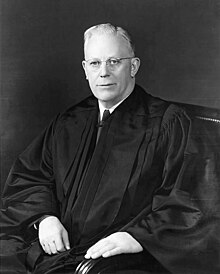User:RockyBalboaIB/sandbox
Warning This page contains syntax errors ("cite%20note") caused by a VisualEditor bug. Do not copy/move content from this page until the errors have been repaired. See {{Warning VisualEditor bug}} for more information. |
Sigma Phi Society of the Thorsen House
[edit]The Sigma Phi Society of the Thorsen House (often referred to as Thorsen or Sigma Phi Society of California) is a collegiate secret society composed of a male undergraduates from the University of California, Berkeley. In 1912, it was founded out of the remnants of an earlier order on campus, the La Junta Club, and was chartered as the California chapter of Sigma Phi Society. In 1942, the society acquired the famous Thorsen House for $29,00
The society, founded in 1912 famously known for their residence, the Thorsen House.

The society was founded in 1912 out of the remnants of an earlier order on campus, the La Junta Club, to serve as the California chapter of the Sigma Phi Society.
One of its first members was Earl Warren, who went on to serve as Governor of California and led the Warren Court as Chief Justice of the United States.[9] In 1942, the society acquired the famous Thorsen House for $29,000, and has since then become synonymous with.[10]
The society hosts communal dinners, organizes small concerts, and offers tours for other students and members of the public, welcoming thousands of visitors a year.[7]
In 1912, the Sigma Phi Society of California was founded out of the remnants of an earlier society on campus, the La Junta Club. One of the chapter's earliest members was Earl Warren, who went on to serve as Governor of California and led the Warren Court as Chief Justice of the United States.[9] The chapter would later acquire the Thorsen House in 1942 for $29,000.[10]
The society was part of Berkeley's intrafraternity system


Since acquiring Thorsen, the Sigma Phi Society of California has become synonymous with its residence and has been alternatively, albeit popularly nicknamed the Sigma Phi Society of the Thorsen House. The society offers tours, organizes small concerts, and regularly hosts communal dinners at the house throughout the school year.[7] Despite the society’s continuous consideration as a secret society, its members and activities are well known; the private traditions and customs of the society, however, remain a secret.
The selection process for the Sigma Phi Society of the Thorsen House is unlike the common fraternity "rush." Rather than a formal and structured process taking place at the beginning of each semester, male students can be considered for initiation by expressing their interest and attending public events anytime during the school year. One must agree to become a resident of the Thorsen to be initiated.[11]
Members of the society are responsible with the preservation of the Thorsen House,[12] and are currently raising funds for an extensive $10 million restoration and seismic upgrade under the guidance of architectural experts. They have also produced some replica furniture in the dining hall. Several contractors are working with current residents and alumni to restore the house to its original state.[13]
Journalist Trip Gabriel of The New York Times visited the Sigma Phi Society of the Thorsen House in the Fall of 1996 to document its preservation efforts and traditions.[11] In an article titled, "A New Sweetheart Of Sigma Phi," he described the nature of the society and its unique relationship to the house:
... the men of Sigma Phi more closely resemble a crew of historic preservationists than the party-loving residents of the typical ''Animal House.'' They inhabit an architectural prize, an 18-room mansion designed and completed in 1910 by Charles and Henry Greene, the poets of the Arts and Crafts movement. The house has cast its spell over generations of college students, who have maintained it in remarkably good shape.
Gabriel also had the opportunity to attend one of the society's communal dinners, a tradition intended to welcome members of the public into the house and to celebrate the
About 25 young men gathered on a recent Monday night for a vegetarian meal of pasta, green salad and crusty Berkeley-baked sourdough bread. They crowded around a table in the dimly lighted, low-ceilinged dining room, where the fireplace features bronze andirons made in 1914 by the Art Metal Company of Los Angeles. Budley, the house Labrador retriever, nosed for handouts beneath the table.
Mr. Tompkins, the fraternity president, performed the impressive feat of introducing everyone by name, many of whom he had just met. After the meal, he invited anyone to share a story with the group. Rather than applaud, he asked diners to snap their fingers ''because it's quieter.''
One student told of a recent hike in Yosemite National Park. Another recounted what he called a politically correct joke. A third young man, with long scraggly hair, said: ''I've got a story to share. I got a job I'm really excited about.'' He was canvassing door to door, he said earnestly, to unseat a local lawmaker ''with a zero environmental rating.''
There seemed little doubt that he would fit right in at the Thorsen House.
Of note, the society has historical affiliations with freemasonry in the San Francisco Bay Area, and had formal ties in its earliest years with the masons of the Masonic Temple in Berkeley; the temple was converted to a bank in 1944 and overtime the society grew distant from freemason activities.[14]
Membership

